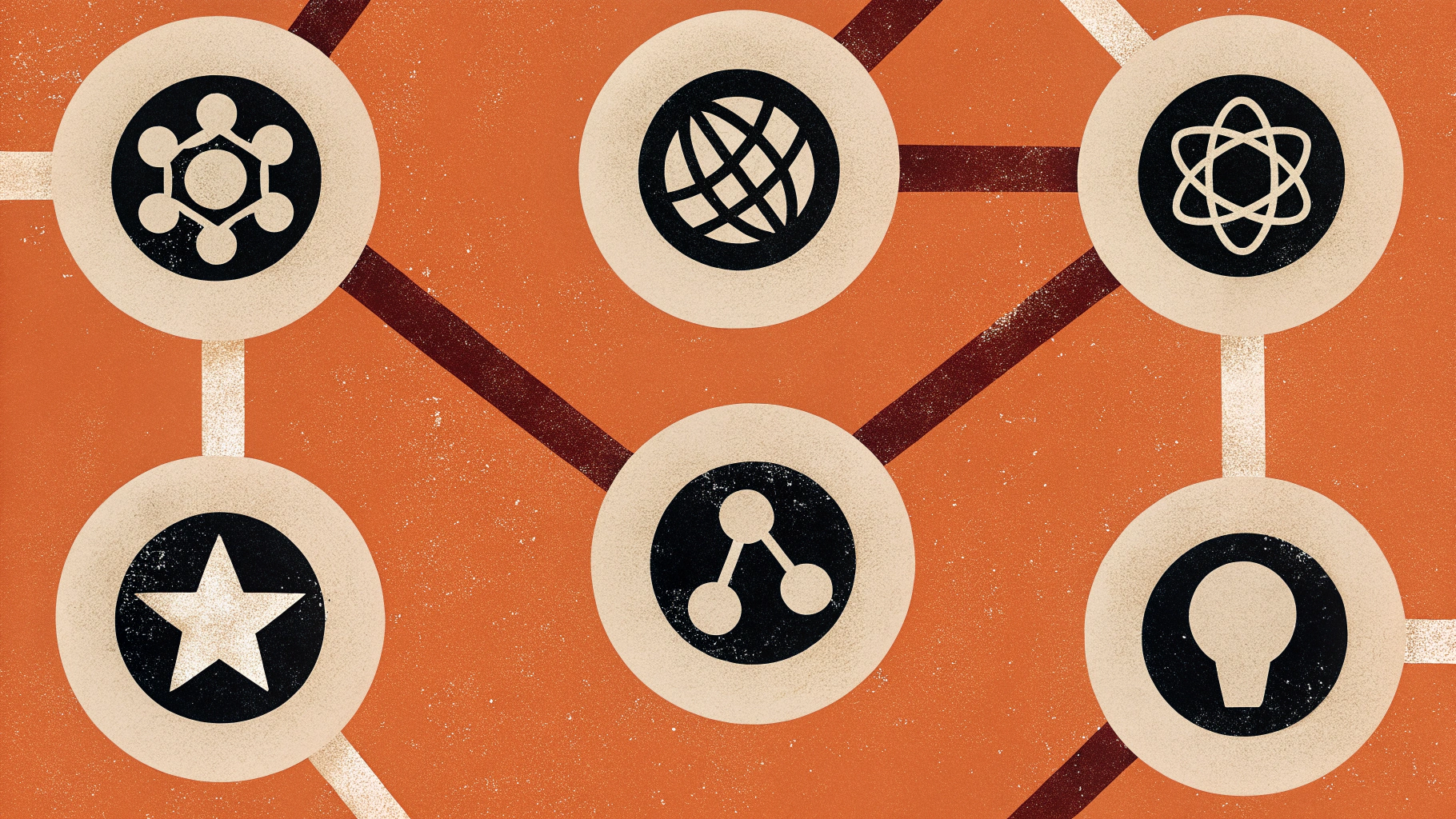The tool changes. The principles don’t.
We’ve been having a lot of conversations lately about AI and branding. Not the “should we use AI?” conversations—that ship has sailed. Everyone’s using it. The more interesting conversations are about what happens when businesses start generating content at scale without the strategic foundation to guide it.
And what we’re seeing is this: AI doesn’t democratise branding. It amplifies whatever foundation you already have.
Strong brand identity? AI helps you scale it consistently.
Weak or unclear brand identity? AI helps you create chaos faster.
AI Is Just a Tool
This feels obvious to say, but it gets forgotten constantly: AI is just a tool.
Like Photoshop. Like Illustrator. Like Canva. Like any creative tool that came before it.
When you give someone Photoshop, they don’t automatically become a designer. The tool enables them to execute—but only if they know what they’re trying to create.
AI is exactly the same.
You can prompt AI to generate content. But if you don’t understand what your brand sounds like, what it stands for, how it should show up—the AI can’t figure that out for you.
The tool has no judgment. It has no strategy. It has no soul.
Those things come from the person using it. From their experience, their understanding, their vision of what they’re trying to build.
The Soul Behind the Work
Someone in our team said something that stuck with us: “AI cannot replicate the soul behind the work.”
What they meant was this: the essence of creative work—the thinking, the judgment, the strategic choices—that can’t be automated.
You can automate execution. You can generate variations. You can scale production.
But you can’t automate:
- Understanding what you’re trying to achieve
- Knowing whether something is good or just technically correct
- Recognising what’s on-brand versus what’s just… content
- Making strategic choices about what to emphasise
- Connecting creative decisions to business objectives
This is why experience matters more now, not less.
Give the same AI tool to someone with 20 years of brand strategy experience and someone with none. Both can generate content. But only one will create something strategic, something that serves a purpose, something that builds towards something.
The difference isn’t the tool. It’s the thinking behind the prompts.
The Ringy Tone

There’s this concept we’ve been discussing: the “ringy tone.”
Like when you hear a musician play three notes and you immediately know it’s Pat Metheny. There’s something in how they play—their signature, their style, their approach—that’s instantly recognisable.
Creative professionals develop this too. A way of thinking, a way of solving problems, a perspective that shows up in their work. Not consciously always, but it’s there.
That signature can’t be automated.
It comes from years of experience. From thousands of decisions. From developing judgment about what works and what doesn’t. From aesthetic sensibility refined over time.
When someone with a strong signature uses AI, you still see their signature in the work. In the strategic choices. In what they keep and what they refine. In the judgment about what’s good enough and what isn’t.
When someone without a signature uses AI, you get… something. Generic output. Technically correct maybe. But forgettable. Interchangeable.
Your brand identity is your organisation’s ringy tone. It’s what makes you recognisable, distinct, memorable.
AI can help express that at scale. But only if the signature exists first.
The Pattern Across Every Tool
Here’s what’s interesting: we’ve seen this pattern before. Multiple times.
When desktop publishing emerged in the 1980s, architects said “real drawings must be done on drafting tables.”
When Photoshop became standard, photographers said “real photos can’t be digitally manipulated.”
When Canva launched, designers worried that everyone would just use templates and all design would look the same.
Every generation protects what made them valuable—until the next generation makes it standard.
And every time, the same thing happens:
- New tool arrives
- Everyone gets excited about “democratisation”
- Everyone uses the same templates and everything looks identical
- Experienced professionals learn to use the tool strategically
- The gap between amateur and expert becomes visible again
- Tool becomes standard, but excellence still requires strategic thinking
AI is following this exact pattern. We’re somewhere around stage 3-4 right now. Generic AI output is everywhere. The businesses with strong brand identity are starting to stand out.
In a couple of years, AI will be completely standard. And the businesses that built strong identity first will have an advantage that’s nearly impossible to catch up to.
Because the tool changed, but the principles didn’t.
When Thinking Becomes More Valuable
There’s a shift happening that’s worth paying attention to.
Before AI, a designer might spend 80% of their time on execution—creating variations, adjusting layouts, preparing files—and 20% on strategic thinking.
With AI handling execution efficiently, that ratio flips. Now 80% can be strategic thinking and 20% directing AI output.
But here’s the critical part: that only works if the strategic thinking is strong.
If you don’t know what you’re trying to achieve, AI just helps you achieve nothing faster.
If you do know what you’re trying to achieve, AI becomes incredibly powerful.
This is like the mother-in-law’s stir fry. You watch her cook and everything comes out perfectly—vegetables not overcooked, flavours balanced, timing just right. You ask “how did you do this?” She says, “I just cooked it.”
The expertise is invisible to the observer. She’s not thinking about it consciously. But she’s making hundreds of micro-decisions based on years of experience. Decisions that someone without that experience would miss entirely.
AI is the same. Good prompting looks simple. But it requires understanding what you’re actually trying to create, what makes it good, how it should feel, what purpose it serves.
That understanding can’t be automated.
Brand Guidelines for Every Tool
Here’s something practical we’ve been thinking about:
When Photoshop became standard, businesses created guidelines for it. Logo placement, colour usage, file formats.
When Canva scaled, businesses created guidelines for it. Which templates were acceptable, how to maintain brand standards within the platform.
When social media emerged, businesses created guidelines for it. Voice and tone, content types, engagement protocols.
AI is no different.
Your brand guidelines need to evolve to include AI. Not as a separate thing, but as part of how your team creates any content.
This doesn’t need to be complicated. It’s the same principle:
Traditional guidelines say: “Our brand colours are blue and orange.”
AI-age guidelines say: “When generating images, prompt for cool blue tones and warm orange accents. Avoid overly saturated colours.”
Traditional guidelines say: “We’re professional yet approachable.”
AI-age guidelines say: “Write in active voice with clear, concise sentences. Use specific examples rather than abstract concepts. Avoid corporate jargon.”
Same principle. Same purpose. Just extended to include another tool.
Without this, you get what we’re seeing a lot right now: Different team members prompting AI in completely different ways based on their personal preferences. Marketing generates formal content. Sales generates casual content. Design generates imagery in conflicting styles.
Not because AI is bad. Because there’s no shared understanding of what the brand sounds like, looks like, feels like.
The Multiplier Effect
This is probably the most important thing we’ve observed:
AI multiplies whatever you put into it.
Strong brand identity → AI scales it consistently across channels
Weak brand identity → AI amplifies the confusion
It’s not neutral. It’s a multiplier.
We’ve seen this with Canva. When businesses had clear design standards, Canva helped them create consistent materials quickly. When businesses had no design standards, Canva just helped them create inconsistent materials quickly.
AI is the same pattern—but more powerful.
You can generate 30 social posts, 10 blog articles, 50 image variations in an afternoon now. If you know what your brand sounds like, that’s incredible. If you don’t, you’ve just created 90 pieces of content that might all sound different from each other.
The speed isn’t the problem. The foundation is.
What We’re Seeing in Practice

We’re working with businesses at very different stages of this:
Some have rushed to AI tools without clear brand identity. They’re generating volume. But it’s generic. It sounds like it could be for any business. Their sales teams don’t use the content because it doesn’t actually help them.
Others have built strong brand identity first. They’re using AI strategically within clear guardrails. Every piece of content reinforces their positioning. It’s all recognisably them.
Same tools. Completely different outcomes.
The difference isn’t the AI sophistication. It’s whether the brand foundation exists to guide it.
The Uncomfortable Question
Here’s the question that makes this real:
Could you give three different people on your team the same AI tool and the same assignment—say, “create five social posts announcing our new service”—and would they all produce something that sounds like your brand?
Not just “professional” or “good.” But recognisably yours. With consistent tone, consistent messaging, consistent approach.
If yes, your brand identity is strong enough to scale with AI.
If no, AI is just going to amplify the inconsistency you already have.
Where This Goes
Every business will use AI. That’s settled.
The question is whether AI amplifies your brand or dilutes it.
And the answer depends entirely on whether you have clear brand identity as your foundation.
We’re not anti-AI. We think it’s incredibly powerful. But we’re also seeing that it demands better strategy, clearer identity, stronger foundations than most businesses currently have.
Tools don’t build brands. People build brands. People with vision, with understanding, with the experience to know what good looks like and the judgment to recognise when something isn’t quite right.
AI can help those people work at unprecedented scale.
But it can’t replace the thinking. It can’t create the strategy. It can’t develop the judgment.
It can only amplify what’s already there.
The Bottom Line
The businesses winning with AI aren’t the ones with the most advanced tools or the biggest AI budgets.
They’re the ones who built strong brand identity first.
They know who they are. They know how they sound. They know what they stand for.
And now they’re using AI to express that at scale.
The businesses struggling with AI are generating impressive volumes of content that doesn’t quite work. That doesn’t sound like anything in particular. That doesn’t build towards anything.
Same tools. Different foundations.
In the age of AI, your brand identity isn’t just nice to have.
It’s what determines whether you’re building something or just making noise.




